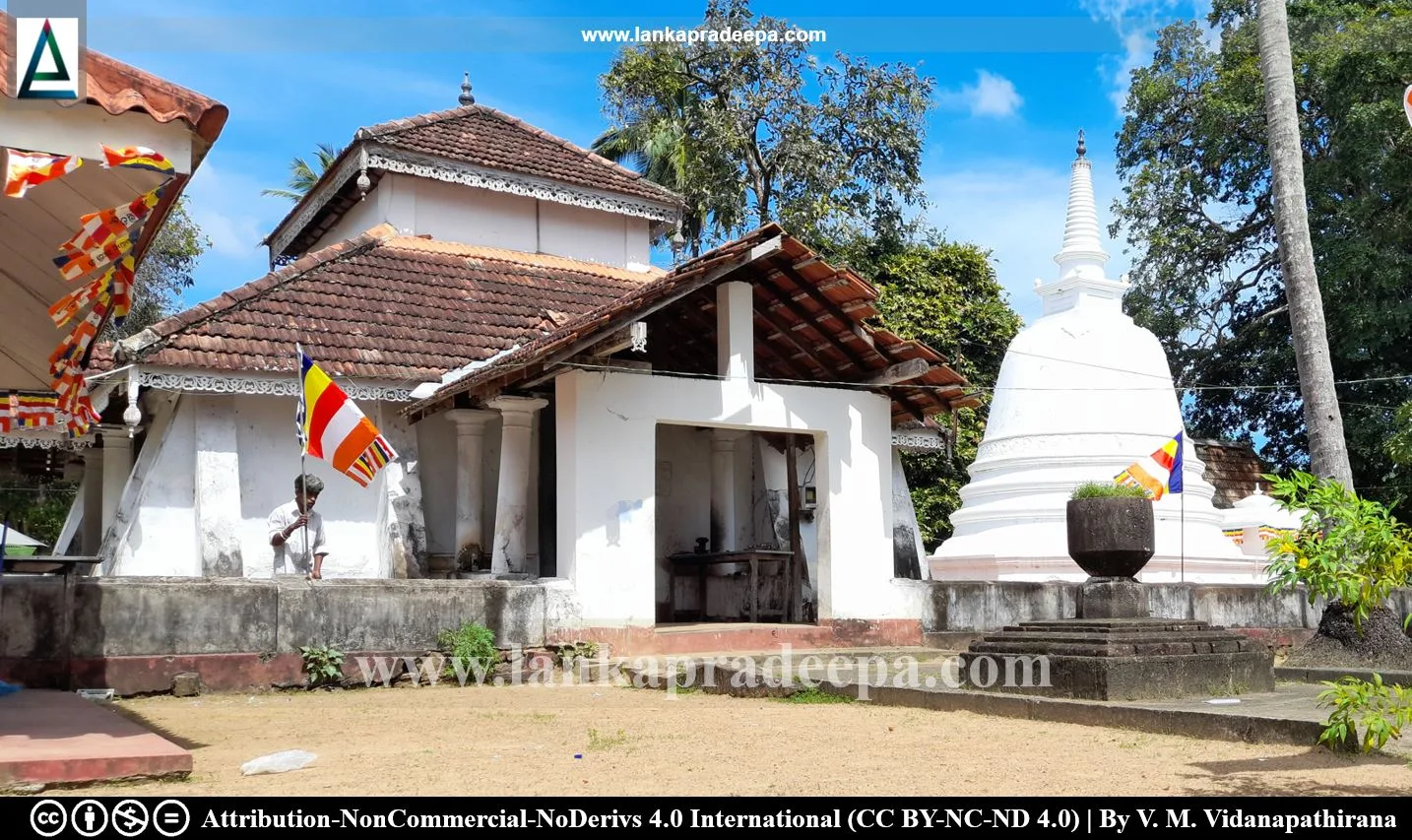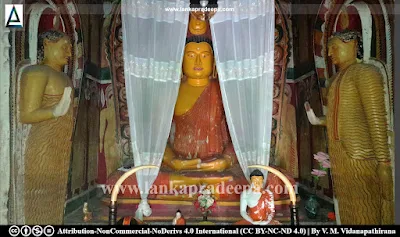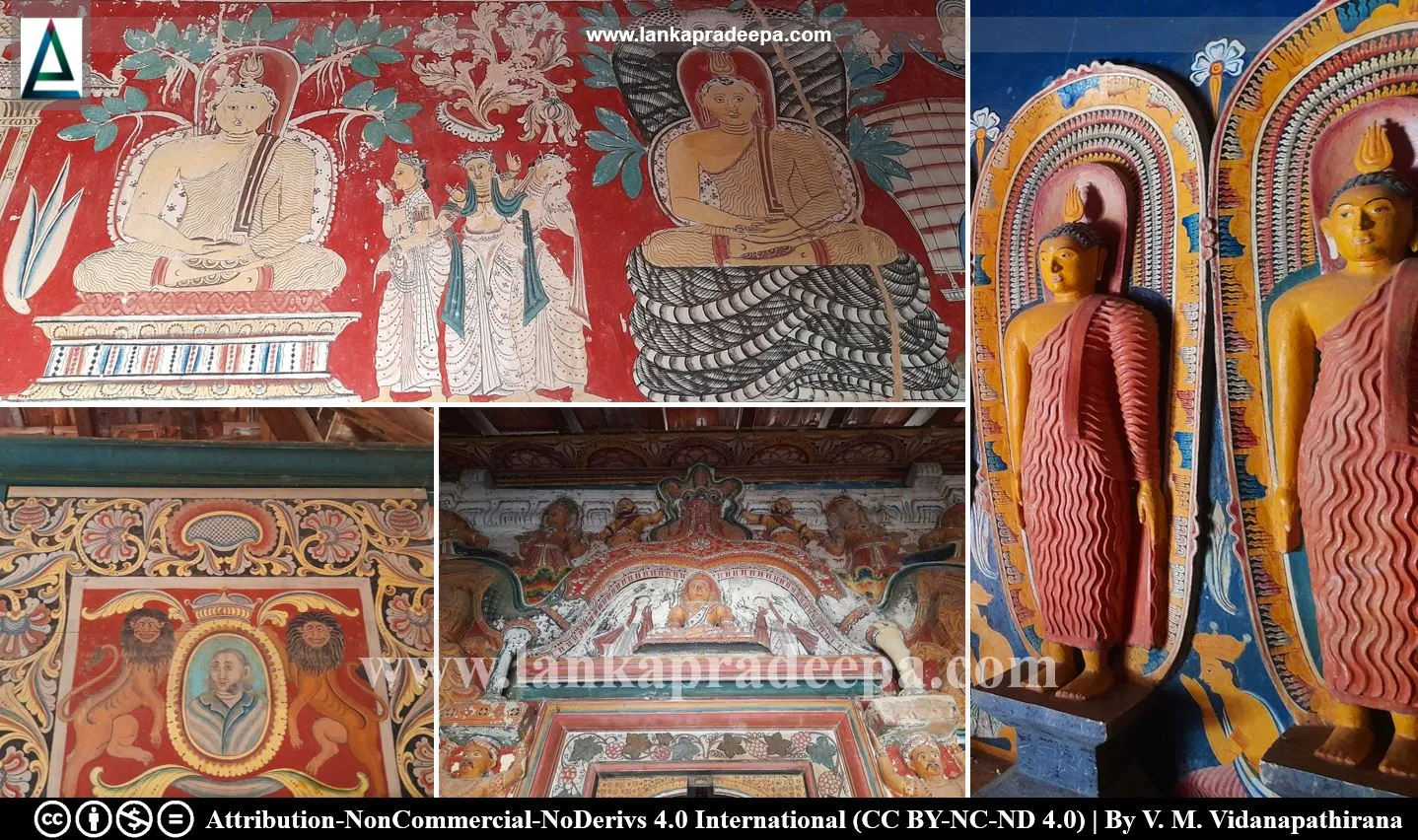
|
Arambegoda Purana Viharaya |
Arambegoda Purana Viharaya, also known as Arambegoda Meda Pansala (Sinhala: දෙනගම අරඹේගොඩ පුරාණ විහාරය), is a Buddhist temple situated in Denagama village near Hakmana in Matara District, Sri Lanka.
History
Locals link the history of this place to the reign of King Buwanekabahu I (1272-1284 A.D.) of Dambadeniya (Wikramaratne, 2015). It is said that the king hid his treasures in several places around the country before his death in 1284 to protect them from South Indian Pandyas who invaded the kingdom. It is believed that three Halambas of the king were hidden at the place where the present Arambegoda temple is located (Wikramaratne, 2015). According to locals, the word Halamba became Halambegoda and was then broken into the present name Arambegoda (Wikramaratne, 2015).

It is believed that this temple was constructed in 1736 by a devotee named Liyanagamarala (Wikramaratne, 2015). It is said that this place was inhabited by Ganninnasela before bringing the Upasampadawa (higher ordination) from Siam (present Thailand) during the reign of King Kirti Sri Rajasingha (1747-1782 A.D.) of Kandy (Wikramaratne, 2015). According to the belief of locals, the name of the Denagama village where the temple is situated came into the parlance after burying the Dena (the coffin containing the body) of a local ruler named Minikirula at the nearby field known as Oluwala Kumbura (Wikramaratne, 2015).
Image house
The image house of Arambepola Viharaya is archaeologically important. Consisting of two sections, viz; the inner chamber and the outer ambulatory, the walls of the inner chamber are filled with murals of the Kandyan tradition. Of them, the murals depicting the Suvisi Vivaranaya (Buddha receiving the blessing from 24 previous Buddhas) and the Sath Sathiya (the first seven weeks after the enlightenment) are notable (Wikramaratne, 2015).


Related Posts
Read Also
References
Books
1) Wikramaratne, I., 2015. Pauranika Sthana Saha Smaraka: Matara Distrikkaya (In Sinhala). Department of Archaeology (Sri Lanka). ISBN: 955-9159-54-2. pp.33-34.
Location Map
Dynamic Google Map
Attribution
To Whom
LankaPradeepa.com extends its gratitude to Mr V. M. Vidanapathirana for providing the necessary photographs required for this article. All the photos are published here with the permission of the author.

